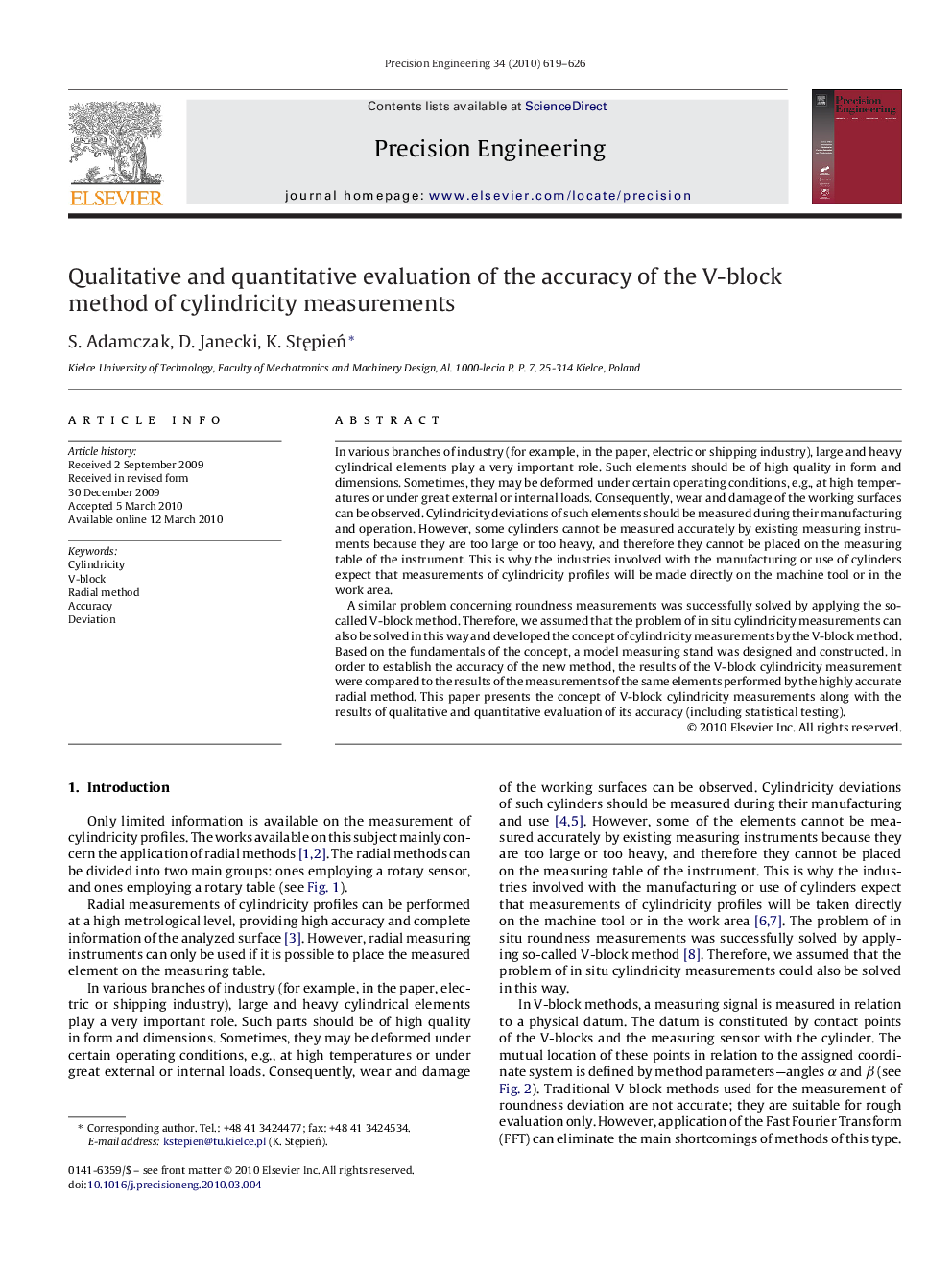| Article ID | Journal | Published Year | Pages | File Type |
|---|---|---|---|---|
| 805307 | Precision Engineering | 2010 | 8 Pages |
In various branches of industry (for example, in the paper, electric or shipping industry), large and heavy cylindrical elements play a very important role. Such elements should be of high quality in form and dimensions. Sometimes, they may be deformed under certain operating conditions, e.g., at high temperatures or under great external or internal loads. Consequently, wear and damage of the working surfaces can be observed. Cylindricity deviations of such elements should be measured during their manufacturing and operation. However, some cylinders cannot be measured accurately by existing measuring instruments because they are too large or too heavy, and therefore they cannot be placed on the measuring table of the instrument. This is why the industries involved with the manufacturing or use of cylinders expect that measurements of cylindricity profiles will be made directly on the machine tool or in the work area.A similar problem concerning roundness measurements was successfully solved by applying the so-called V-block method. Therefore, we assumed that the problem of in situ cylindricity measurements can also be solved in this way and developed the concept of cylindricity measurements by the V-block method. Based on the fundamentals of the concept, a model measuring stand was designed and constructed. In order to establish the accuracy of the new method, the results of the V-block cylindricity measurement were compared to the results of the measurements of the same elements performed by the highly accurate radial method. This paper presents the concept of V-block cylindricity measurements along with the results of qualitative and quantitative evaluation of its accuracy (including statistical testing).
